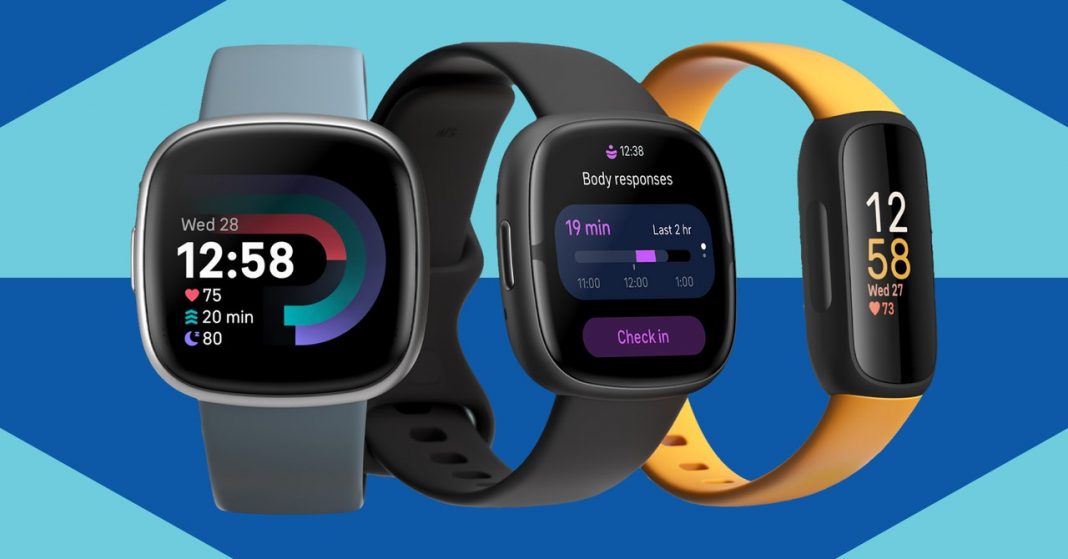In other ways, the Fitbits are even an improvement over the Apple Watch. For example, both trackers tout a full week of battery life and a day’s worth of battery in 12 minutes of charging, as compared to barely a day with the Apple Watch Series 7.
Some Google-driven feature changes, like turn-by-turn directions with Google Maps and Google Pay with Google Wallet, are expected to arrive on these wearables, but at launch they have yet to make an appearance.
The Versa 4 is optimized more for working out, with built-in GPS and 40 different exercise modes. However, the Sense 2 now has a new Body Response sensor. When you measured stress on the first Sense, you held your hand on the watch’s metal bezel. Rather than spot-testing, the Sense 2 now continuously monitors your electrodermal activity, along with your heart rate, heart rate variability, and skin temperature, to help you identify your stress triggers. A Check-In button prompts you to decompress with stress management tools like guided breathing.
Both watches are also much lighter and thinner than previous iterations. The Versa and Sense lines include accessories designed by the Black-owned fashion brand Brother Vellies. There are infinity band options as well—certainly a take on the Apple Solo Loop. As with the Inspire 3, the Daily Readiness score, sleep profiles, and advanced stress management metrics are accessible with a Fitbit Premium subscription. At least Fitbit offers six months of Fitbit Premium for free with the purchase of any of its trackers.
Even though the Apple Watch continues to dominate the smartwatch market, I’m still fond of the attractiveness and simplicity of Fitbit’s designs. Google’s acquisition of Fitbit placed Google in a better position to compete with Apple, but it wasn’t entirely clear whether that meant Fitbit wearables themselves were going to become better and smarter. It just meant that maybe, thanks to an injection of Fitbit DNA, Wear OS fitness trackers might become marginally less clunky and annoying to use.
But small, significant improvements that marry the respective expertise of both companies, like better battery life and thinner displays with Fitbit’s advanced health features? That’s something we can get behind. Now if only something could be done about that annoying Fitbit Premium subscription.
